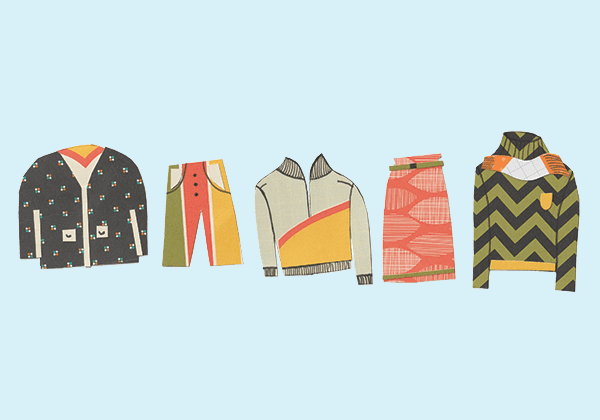Sewing clothes is a hobby I picked up during quarantine. After watching a couple of YouTube videos I found use for a few old pairs of jeans and a bleached doona cover. While I’ve hand-sewn little felt cakes, fruits and animals since I was around 10, and picked up machine sewing with tote bags and pencil cases throughout high school, I’d never sewn clothes until mid-last year.
For anyone who creates things, being told someone will pay you for your work is one of the best compliments you can get. Until it gets asked for the third time – I’m sorry, but I don’t like selling what I sew.
My mum is the person who got me into sewing when I was younger as I’d play around with her fabric scraps and some cheap thread. “It’s very convenient, you can alter, you can fix things when somethings not right, instead of just throwing it away. Like I give you dad’s old jeans and you make it into a skirt,” she tells me.
I struggle to contain my excitement in pinning an idea on Pinterest and then finding some fabric in my hoard of materials to actually make it. This is why I love sharing my process online; from drawing a design with my amateur drawing skills, drafting a pattern with my measurements that are probably completely off, to then constructing the pieces and sewing the final garment. With all the comments of support from my friends and sharing of ideas from the sewing mums I follow back on Instagram, I’m often asked why I won’t sell my pieces, or make an exception for a friend.
I rarely sew the same garment twice because there’s no real creative gain from it; even if I really love the design, I’ll always make a slightly different version. I fear that if I’m selling these pieces and making the same thing over and over again, sewing will turn into a source of income, not a source of fun and creativity. I don’t want to turn my hobby into work at the risk of losing the joy I find in it.
My mum, who used to sew for work before she came to Australia almost 30 years ago, agrees with me, “To sell is not worth the time… You make it when you feel like you want to do it, not because someone ordered it.”
However, one of my brothers says, “I think you should do commissions, I feel like you haven’t yet experienced the feeling of making something and someone buying it, loving it and wearing it – there’s a special joy in that.”
In a more practical sense, sewing is a sponge and time is water. On average, one garment will take me around five to ten hours, and at a rate of $20 an hour I’d need to charge over $200 a piece. While some may say that they’d happily pay $200, if I just spent day and night working on a piece, making sure it fits my body and my style preferences, it becomes really special to me, and often signifies a new skill I’ve learnt in the process. Like the first time I sewed an invisible zipper, or made a top with puffy sleeves. The garment becomes a part of my sewing journey, and so I want to keep it for myself!
But all my selfish reasons aside, what sewing has taught me is that there’s no way a dress for $50 is made with a completely ethical production chain. Somewhere along the line, someone is being underpaid and synthetic materials are being used. There’s enough clothing in the world, and with plenty of small boutiques and handmade businesses out there that depend on sales for a living, I’m not in a position to take that away from them. I’m not in a position to introduce more clothing into the world for commercial purposes.
I’m not in it for the money – I sew purely for the enjoyment of finding new ways to sew buttonholes, create ruffles, attach sleeves, and saying “Thanks, I made it!”





